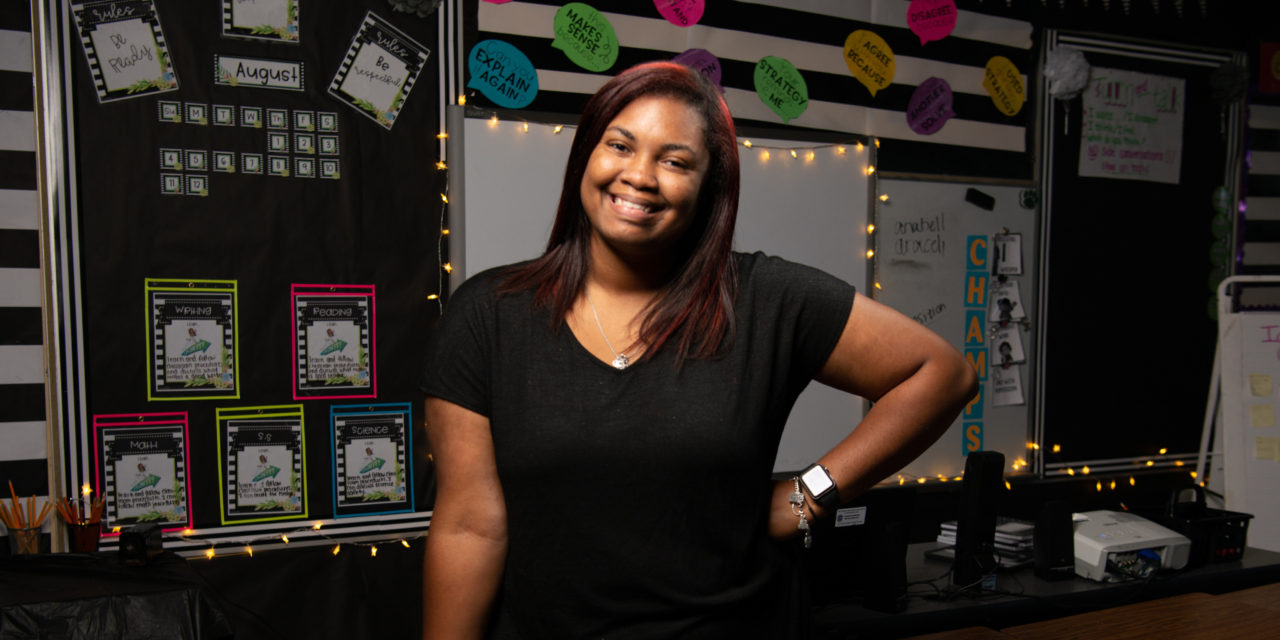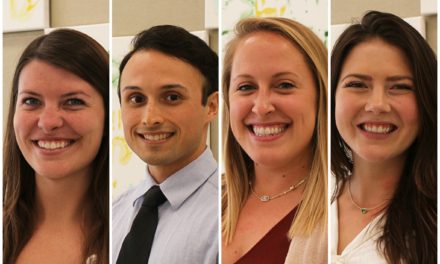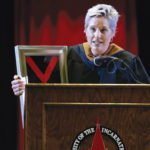Meet UIW Alumni who are transforming lives inside and outside of the classroom
By Marissa Rodriguez
Taquera Amerson spent the week before the first day of school prepping her classroom and planning lessons. Amerson, a fourth-grade teacher at Herman Hirsch Elementary School in the San Antonio Independent School District, decorated her classroom in black and white stripes, punctuating the palette with colorful laminated signs outlining class expectations and motivational phrases. A library is staged in a corner (for which her father fashioned small seats out of milk crates), and she transformed a plain closet door into The Fridge, on which the best student works would be taped, like a family refrigerator. Walls are painted a cool grey, another of her DIY endeavors. Over the door to her room is a sign reminding all who enter that “you can do amazing things.”
 “I thought about how I wanted the classroom environment. How do I want to approach my kids? What do I want my room to feel like?,” said Amerson ’17. Preparations for the new school year, only her third as a teacher, actually started the year before. She spent the summer researching for her class, building on her strengths and working on weaknesses. She also focused on how to best organize her busy, long days that usually begin by 7 a.m. when she writes her students a daily welcome and don’t stop until long after the bell rings at 3:20 p.m. Yet, she says, she loves it.
“I thought about how I wanted the classroom environment. How do I want to approach my kids? What do I want my room to feel like?,” said Amerson ’17. Preparations for the new school year, only her third as a teacher, actually started the year before. She spent the summer researching for her class, building on her strengths and working on weaknesses. She also focused on how to best organize her busy, long days that usually begin by 7 a.m. when she writes her students a daily welcome and don’t stop until long after the bell rings at 3:20 p.m. Yet, she says, she loves it.
Amerson is one of many University of the Incarnate Word alumni who are working teachers. While her years as a student may have ended, she continues to receive support and guidance from the UIW Teacher Network. The induction program developed through the Dreeben School of Education provides an extra layer of support for graduates between their UIW education and their first three years as teachers, so that teachers as passionate and dedicated as Amerson stay in the classroom.
“Teaching is a profession that doesn’t phase you in. In medical school, you have a residency. In teaching, the expectations of the first year teacher are the same as those of the veteran teacher,” said Dr. Elda Martinez, professor and director of the Teacher Education Program.
For new teachers, the first three to five years in the profession are critical. They are establishing themselves in the classroom, learning to work with administrators, and discovering their approach, among many other things. It’s also when up to 50 percent of teachers leave the profession.
“There are a lot of facets creating pressure on teachers that haven’t always been in place. Accountability with school ratings, standardized testing and external measures, all of that pressure impacts teachers and takes away from their original interest in teaching,” said Martinez. Today’s teachers also deal with increasing family issues, trauma and school safety.
In-classroom and in-community issues also pose new challenges. The need for more English language support, a growing focus on students’ mental health and emotional/behavioral issues, the increasing need for teachers to meet the varying needs of diverse students, and amplified socio-cultural issues and racial tension in communities, are all factors that add additional pressure.
“Most first-year teachers struggle with the realities of the classroom. By creating the UIW Induction Program to meet new TEA accreditation requirements for first-year teachers, I also hoped to improve teaching and thus student learning by providing support, encouragement and guidance to our graduates who are new to the teaching profession,” said Dr. Denise Staudt, dean of the Dreeben School of Education, who created the program. “In addition, I wanted to create a program for our graduates that could provide opportunities for professional growth for them in a collegial, non-judgmental environment.”
That’s the work of UIW Induction Coordinator Brandi Coleman. A former fifth grade teacher and assistant principal, Coleman is well versed in the challenges and joys that come with being a teacher and the perspective of an administrator. For the past three years, Coleman has made it a point to visit every newly certified teacher working in a classroom offering advice when asked and helping to ensure that they have the tools they need to adapt to their new, dynamic profession. In addition, the UIW Teacher Network offers professional development opportunities on topics relevant to novice and experienced teachers which expands the professional learning community.
“Our state is changing, and our nation is changing, as are the requirements needed for a teacher to be successful. So, they have to be able to be flexible,” said Coleman. “I try to help them with transitions that come up or everyday things that they have to deal with. We don’t ever want to conflict with what the school is telling them to do, but we do want to advise the new teachers toward the most professional and ethical course.”
Coleman has visited about 100 classrooms in recent years and spoken to many more alumni teachers both in the San Antonio area and abroad on an as needed basis, often on evenings and weekends, or whenever busy teachers have a moment.

Anna Laura Castello’s classroom is set for success
“I remember my first year, she helped me get set up in my classroom,” said Anna Laura Castello ’16, a sixth grade teacher at Smithson Valley Middle School in Comal Independent School District. In that first year, Coleman visited Castello two or three times throughout the year, helping her set up a new two-by-two desk configuration and offering suggestions on lesson planning and grading, especially with essays, which were particularly challenging with more than 180 students coming through her English Language Arts classes. “My first year was kind of tough, but listening to the other teachers that I work with and listening to Brandi’s advice, I was able to change that and improve on my grading.”
Castello is now in her third year of teaching and works hard to inspire her students to love school and share her love of life-long learning, especially as they tackle the transition from elementary school to middle school. “The first month, they are kind of scared because they are used to elementary school where they had one or a couple of teachers and now they have seven different teachers,” she said. She approaches their nerves and inexperience with patience and support, much like she received, helping them become more responsible and independent. “I always tell them if they have any questions they can come to me, I can help set up their binder and folders. The sixth grade year is their year to learn and (then) do everything better for seventh grade.”
Castello also coaches track and field and soccer, and helps prepare seventh and eighth graders to compete in impromptu public speaking. That dedication earned her the recognition of her peers and a first-year teacher award, just one of the ways Castello has felt supported. “I am very lucky, this school is amazing,” she said. “It truly makes a difference when you work with people who love their job and are willing to help each other out.” Many teachers have to try working at different institutions before they find a school that is a good match, something Coleman says is common in the early years. “But, once they find their fit, they fly.”

Adriana Moreno in class
Adriana Moreno ‘13 has faced that challenge firsthand. At the beginning of her career, she accepted a teaching position yet lacked the needed support for professional growth. “The school that I am in now is amazing, the administration is behind you 100 percent,” said Moreno, now a sixth-grade math teacher at Sul Ross Middle School in Northside Independent School District. “Everyone is there to help you grow … and I am really happy to be where I am now.”
Finding a support structure and a good fit in a working environment are critical to success and longevity in the field, but teaching always comes with challenges. Moreno teaches at a Title I campus, a designation for schools where 40 percent or more of the student population are low-income and which receive federal funding to help them meet goals. Many of her students, she said, have experienced hardship or more trauma at 11 or 12 than many adults have ever dealt with.
“I feel like sometimes I am a counselor, sometimes I am a mom, sometimes I am a friend. I am playing all of these different roles while teaching is my job,” she said.
“It’s about teaching these kids that regardless of the environment they come from there will be people they can rely on. You are here to be a role model, to be a light if they need it, to be that teacher that sparks a joy for learning.”
With six sections and 100 students to teach math to, serving each of their needs and instilling a growth mindset is a big job. The success of her students is what motivates Moreno the most, whether that means improving at the STAAR test or growing in responsibility and maturity. She feels that the job is to be of service to the student, her colleagues and the community around her. Now, seven years into her profession, she has grown as a teacher and is happy to share what she has learned in her journey. Coleman has reached out to her, and other working professionals, to seek that insight and help future teachers get a sense of new approaches, technology and programs.
“They are constantly looking for input and I really appreciate that,” Moreno said. “They see us as resources, treating us as equals and as professionals.” The primary goal of the induction program is to bridge preparation and professional practice, to support new teachers so that they stay, says Martinez. The longer they stay, the greater impact they can have for more students.
For Robert Anderson ’14 that is certainly the plan. This year, he joined O’Connor High School in Northside Independent School District as a biology and pre-AP biology teacher and also coaches football and track. Playing both roles at the school allows him to get to know students inside and outside of the classroom and support many different needs, something he came to understand well at the school where he previously taught.

Robert Anderson sees his students through graduation.
Anderson’s four science classes are largely made up of freshman. As a science instructor, he communicates at his students’ level, encouraging those intimidated or turned off by the subject. When they succeed, he seizes the opportunity to show them their potential to do even better. As a coach, he offers them guidance on the field and an outlet for their energy while getting to know them on a different level. That also means that students look to him as a trusted adult, especially when they don’t have one they can count on in their home lives, and approach him with personal issues.
“No teaching class ever prepares you for those moments or those questions,” he said. “Sometimes they will come to me in the morning when I am doing paperwork or have some things to do, but I put those things on pause because I need to give that kid the time that they need.” As they progress throughout the rest of their high school years, they will often come back to check in or jokingly ask to take his course again. “I teach what I teach,” he tells them, “but I will always be there for you.” He’ll see his students graduate and sometimes after, and they’ll surprise him by what they remember from his class or recall a life lesson he unexpectedly taught.
A sixth-year teacher, Anderson is just out of those trying first five years and fulfilled with the job and the impact it allows him to make. He envisions himself teaching for the rest of his career. “I have about 38 more years to go,” he said. “I think it’s the perfect job. I don’t think there is anything better than this.”










